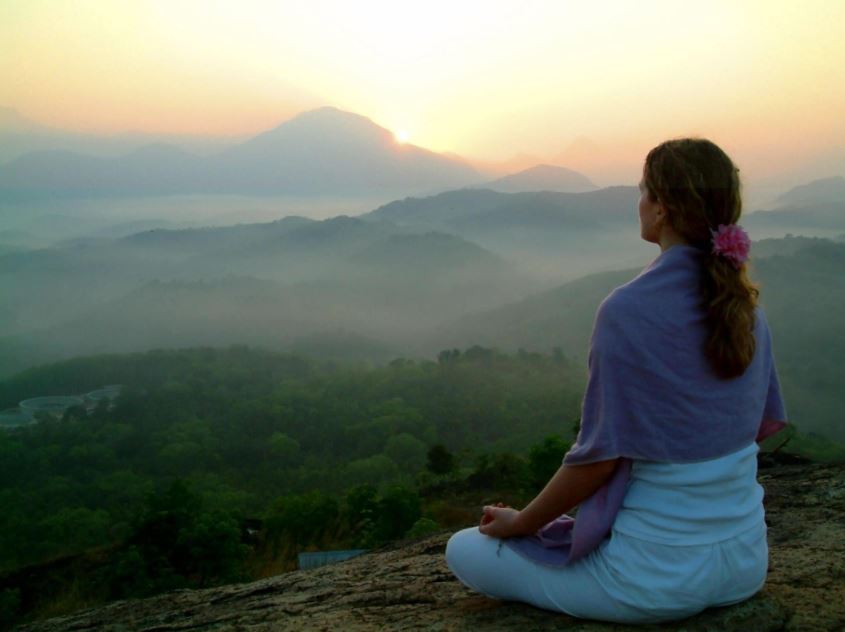Yoga for Stress and Anxiety Relief: A Holistic Approach to Mental Well-being
In the hustle and bustle of modern life, stress and anxiety have become prevalent challenges affecting individuals from all walks of life. As people search for effective ways to manage their mental health, the ancient practice of yoga has emerged as a powerful and holistic solution. In this article, we will explore the various aspects of yoga that contribute to stress and anxiety relief, providing you with a comprehensive guide to integrating this transformative practice into your daily life.
Understanding Stress and Anxiety:
Stress and anxiety are natural responses to the demands and challenges of life. While a certain level of stress can be motivating, chronic stress and anxiety can have detrimental effects on both mental and physical well-being. Yoga, with its unique combination of physical postures, breath control, and meditation, offers a holistic approach to addressing these issues.
The Physical Component of Yoga:
- Asanas (Yoga Poses): Yoga involves a series of physical postures or asanas that are designed to strengthen and stretch the body. These poses not only improve flexibility and balance but also help release tension stored in the muscles. Certain poses, such as Child’s Pose, Downward-Facing Dog, and Cat-Cow, are particularly effective in promoting relaxation and alleviating physical symptoms of stress.
- Release of Tension: Many yoga poses involve conscious relaxation of specific muscle groups. This focused release of tension helps individuals become more aware of their bodies and encourages a sense of physical ease, reducing the overall feeling of stress.
The Breath-Body Connection:
- Pranayama (Breath Control): The breath is a powerful tool in yoga for managing stress and anxiety. Pranayama, or breath control, involves various techniques that regulate the breath, promoting a sense of calmness and balance. Deep diaphragmatic breathing, alternate nostril breathing (Nadi Shodhana), and abdominal breathing are effective practices for calming the nervous system.
- Stress-Reduction Through Breathing: Conscious breathing activates the parasympathetic nervous system, also known as the “rest and digest” response. This counters the effects of the sympathetic nervous system, responsible for the “fight or flight” response triggered during periods of stress. By incorporating breath control into your yoga practice, you can directly influence your body’s stress response.

Mindfulness and Meditation:
- Dhyana (Meditation): Meditation is a core component of yoga that focuses on calming the mind and achieving a state of deep awareness. Mindfulness meditation, in particular, has gained popularity for its effectiveness in reducing stress and anxiety. By observing thoughts without judgment and staying present in the moment, individuals can break the cycle of anxious thinking.
- Yoga Nidra: Often referred to as yogic sleep, Yoga Nidra is a guided meditation that induces a state of conscious relaxation. This practice is especially beneficial for those dealing with insomnia or heightened stress levels. Yoga Nidra promotes deep rest and rejuvenation, allowing the mind to release accumulated tension.
Read More: How to Use Meditation to Relieve Stress
Creating a Yoga Routine for Stress Relief:
- Start with Simple Poses: If you’re new to yoga, begin with simple poses that focus on gentle stretching and relaxation. Gradually introduce more complex poses as your flexibility and comfort levels increase.
- Incorporate Breathwork: Dedicate a portion of your practice to pranayama. Simple techniques, such as diaphragmatic breathing or the 4-7-8 breath, can be practiced independently or integrated into your yoga routine.
- Mindful Movement: Pay attention to the sensations in your body as you move through each pose. Mindful movement enhances the mind-body connection and contributes to a sense of inner peace.
- Set Realistic Goals: Establish achievable goals for your yoga practice. Consistency is more important than intensity. Even a short daily practice can yield significant benefits over time.
- Explore Different Styles: Yoga offers a variety of styles, from Hatha to Vinyasa to Restorative. Explore different styles to find the one that resonates with you and suits your stress-relief goals.
The Science Behind Yoga and Stress Relief:
Scientific research supports the positive impact of yoga on stress and anxiety relief. Studies have shown that regular yoga practice can:
- Reduce Cortisol Levels: Yoga has been associated with lower cortisol levels, the hormone released in response to stress. This reduction contributes to an overall sense of well-being.
- Enhance GABA Levels: Yoga has been linked to increased levels of gamma-aminobutyric acid (GABA), a neurotransmitter that promotes feelings of relaxation and reduces anxiety.
- Improve Heart Rate Variability: Yoga positively influences heart rate variability, a measure of the heart’s ability to respond to stress. Improved heart rate variability is associated with better stress resilience.
Incorporating yoga into your daily routine can be a transformative journey toward stress and anxiety relief. By combining physical postures, breath control, and mindfulness practices, yoga addresses the root causes of stress at both the physical and mental levels. Whether you’re a beginner or an experienced practitioner, the key is to approach your practice with an open mind and a commitment to self-care. Embrace the holistic benefits of yoga, and let this ancient practice guide you on a path to greater mental well-being.